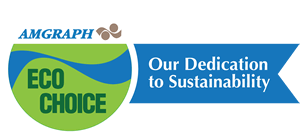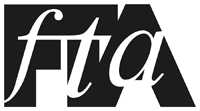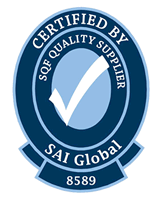 As a business-to-business industry, flexible packaging companies often experience regulatory and consumer concerns indirectly. Yet because our products are in direct contact with consumers, adverse environmental and social factors impact both our business and our clients. The result can be felt in decreased product demand, product recalls, litigation, and damaged reputations.
As a business-to-business industry, flexible packaging companies often experience regulatory and consumer concerns indirectly. Yet because our products are in direct contact with consumers, adverse environmental and social factors impact both our business and our clients. The result can be felt in decreased product demand, product recalls, litigation, and damaged reputations.
AMGRAPH makes it our business to stay ahead of regulatory and consumer trends that affect our industry and our clients’. By the time it becomes an issue, we’ve already established internal guidelines to seamlessly comply with the continually changing demands of regulatory agencies at the federal, state, and local levels.
Key regulations affecting the packaging industry can be divided into two categories: environmental and package safety and health. This post begins with regulations affecting the environment, and a second post follows to cover the safety and health concerns of product packaging.
By applying self-regulatory standards before being required to meet stringent compliance requirements, AMGRAPH is prepared with cost-effective, consumer-focused, and sustainable practices that benefit everyone.
Environment
The emphasis on environmental protection in regulatory trends continues to grow as agencies and society place sustainability management at the forefront. AMGRAPH chooses to put in place sustainable operating practices before more harm is done to the environment and before requirements and litigation force the industry to make large capital investments, or pay pollution abatement costs or penalties.
Overall, making the choice to protect the environment benefits the regulating agencies, our community, and our clients.
Environmental Regulations
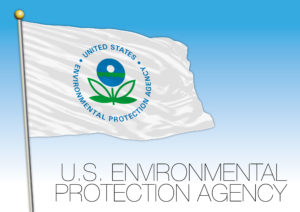 The U.S. Environmental Protection Agency (EPA) regulates air and water pollution for industrial facilities. Air pollution is regulated under the Clean Air Act (CAA), and through its National Emission Standards for Hazardous Air Pollutants (NESHAP), key groups of air pollutants are regulated, including Criteria Air Pollutants (CAPS), Hazardous Air Pollutants (HAPS), and Volatile Organic Compounds )VOCS).
The U.S. Environmental Protection Agency (EPA) regulates air and water pollution for industrial facilities. Air pollution is regulated under the Clean Air Act (CAA), and through its National Emission Standards for Hazardous Air Pollutants (NESHAP), key groups of air pollutants are regulated, including Criteria Air Pollutants (CAPS), Hazardous Air Pollutants (HAPS), and Volatile Organic Compounds )VOCS).
For facilities emitting more than 25,000 metric tons of carbon dioxide equivalent (CO2ₑ), EPA’s Greenhouse Gas Reporting Program (GHGRP) requires a report of total emissions. Currently there are certain states and regions with carbon cap-and-trade programs for reducing emissions, and international regulations are also an impending possibility.
Water is regulated under the Clean Water Act (CWA) with set discharge quality requirements. Liquid and solid hazardous waste management is also tracked “cradle to grave” by the EPA through the Resource Conservation and Recovery Act (RCRA). The Comprehensive Environmental Response, Compensation, and Liability Act (CERCLA) established regulations for funding remediation of current and past discharges of any CERCLA wastes as well as mitigation measures for hazardous waste disposal.
Packaging companies must bear the responsibility of meeting both industry requirements and market preferences in order to retain company value and remain competitive. Companies that don’t meet the regulatory requirements for environmental impacts could face penalties for violations, increased operating costs, and diminished demand or potential bans on products.
The environmental concerns for flexible packaging can be grouped into four main categories of air, waste, water, and energy.
Air Quality
The packaging industry generates significant greenhouse gas emissions, creating the risk of being targeted for regulation and the resulting compliance costs. Air quality is further impacted by other air emissions, including SOx NOx, carbon monoxide, PM10 and PM2.5, chlorine dioxide, among others. Exposure is linked to reduced respiratory function and fatal diseases.
Air quality regulations are growing more stringent and new legislation is expected. The recent EPA rule, the Boiler MACT, set limits on industrial power boilers, and could have huge financial impact on companies who aren’t in compliance with the emerging regulation requirements.
As concerns continue to rise over the health effects of air pollution, a packaging company who has invested ahead of the predicted emission regulations is demonstrating operational efficiency that is passed on to its clients. Amgraph has installed fuel cells that provide clean free heat to our entire plant. This has allowed us to take all 3 of our 75hp Boilers offline. In addition our Geo-thermal cooling unit has allowed us help reduce our energy needs for cooling of our plant.
Waste Management
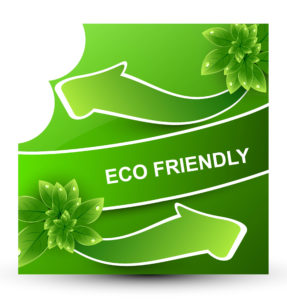 Another environmental issue is waste management. Packaging companies can experience improved efficiencies in operation and long-term costs by undergoing proper waste handling. Managing waste generation is important not only because of the long-term liability in environmental cleanup and mitigation costs, but to protect people and the environment from the harmful effects of these often hazardous substances. Amgraph uses 100% water based or EB inks which produces minimal VoC’s.. We also recycle 98% of waste generated.
Another environmental issue is waste management. Packaging companies can experience improved efficiencies in operation and long-term costs by undergoing proper waste handling. Managing waste generation is important not only because of the long-term liability in environmental cleanup and mitigation costs, but to protect people and the environment from the harmful effects of these often hazardous substances. Amgraph uses 100% water based or EB inks which produces minimal VoC’s.. We also recycle 98% of waste generated.
Water Management
Packaging production involves the consumption of large amounts of water. Water is used and wastewater is produced that may contain contaminants that is then treated, reused, or discharged. Companies must adopt strategies to address both water treatment issues as well as supply problems.
Water is fast becoming a scarce resource and trends suggest that availability will reach severe levels by 2025. It’s critical to begin managing water to improve production techniques, increase recycling of process water, and lower waste in preparation of higher supply costs and regulatory risks and penalties. AMGRAPH has several processes in place for substantial water savings, including our two new fuel cells that save over 4,700,000 gallons of water.
Energy Management
Finally, energy management is of major concern in protecting the environment. Energy from the direct combustion of fossil fuels generates greenhouse gas emissions and depletes natural resources. The reliance on electrical energy results in the potential risks of limiting the emission of electrical utilities that can bring higher operating costs.
Packaging companies can benefit from the management of energy through a combination of energy independence and renewable and alternative energy use.
Environmental regulation on energy use is likely to increase along with the impacts on profitability and costs. The more a packaging company reduces its environmental footprint through various energy measures, the more prepared it is for rising energy prices and complications. Our two fuel cells are an example of alternative energy and energy independence, and the new green plant construction incorporates further energy savings.
In anticipation of consumer demands and regulatory trends, AMGRAPH ensures quality safeguards in research and development. As the flexible packaging industry undergoes tremendous growth and regulatory change, we are committed to helping prepare and protect our clients and the planet.
